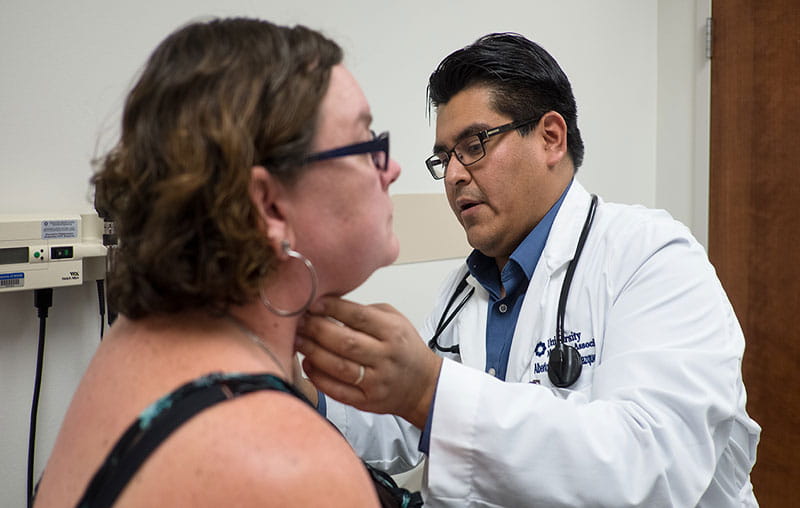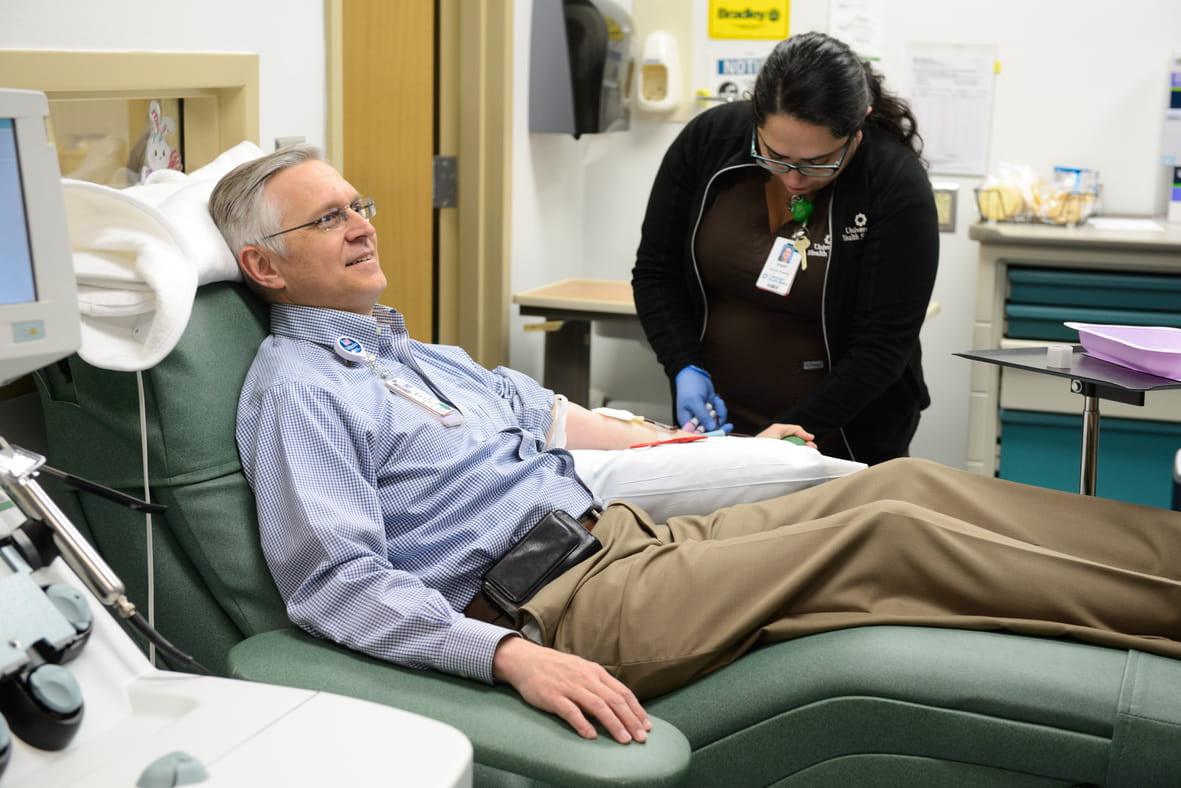Can't get a good night sleep? You're not alone. Several problems can contribute to poor sleep, but snoring is one of the most common and obvious – if not for the snorer, then for the spouse.
Snoring can be a sign of obstructive sleep apnea, a condition in which the sleeper’s airway is temporarily blocked, causing the sleeper to gasp for air multiple times a night. Airways can be blocked by the tissues of the soft palate or the tonsils, or sometimes by fat in the neck.
The sleeper often is not aware they're waking up, but may feel sleepy or irritable during the day, or have headaches and trouble concentrating. A pattern of poor sleep can contribute to serious health problems, said Amanda Brosnan, a physician assistant in the Sleep Clinic at University Health's Robert B. Green Campus downtown. “Sleep apnea is a spider web connected to all these other health conditions,” Brosnan said. “It can exacerbate memory problems, dementia, heart problems, high blood pressure, even a poorly regulated blood sugar level.”
Lack of sleep, or poor-quality, interrupted sleep, robs us of crucial down time in which all kinds of healing processes take place in the body, she said. “We've got relationships to handle, we've got household responsibilities to handle. When you have a sleep problem, that is found to affect every aspect of your life," she said. "And it affects your other health conditions, too, because your body does not have that time to heal.”
Sleep apnea can be diagnosed through a sleep study in which sensors record brainwave activity, heart rate and breathing rhythms. The University Health sleep studies are conducted in a section of hotel rooms that the system leases. Patients find them more comfortable than a typical clinic setting.
Sleep specialists can then determine whether a patient has obstructive sleep apnea and what the best treatment might be. Recommendations can include weight loss, a CPAP device, or, in some cases, surgery. CPAP stands for continuous positive airway pressure. It involves wearing a mask over that blows air down the patient’s throat at night to keep airways open.
It usually takes some time to adjust to using it, but patients who stay with the treatment often report a stunning improvement in their quality of rest and energy levels. “The machine is intimidating,” Brosnan said, “but it's a life-changing treatment.”

Heart disease is the leading cause of death for both men and women.
Our free online risk assessment only takes a few minutes. It will help you better understand your risk of developing heart disease and how you may be able to lower it.




